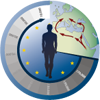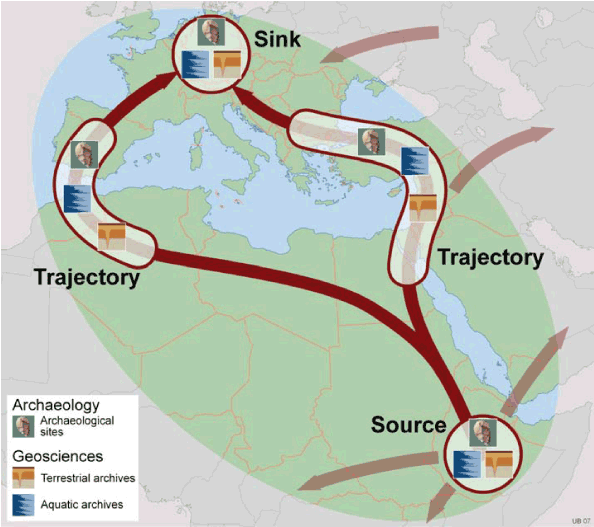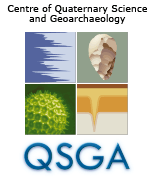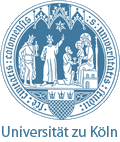Phase 1+2
Our Way To Europe concerns the history of mankind. We specifically intend to approach this with a combination of geoscientific and archaeological methods. Population dynamics and dispersal processes contributed essentially to the transmission of ideas, techniques, cultural behaviour and the formation of human societies.
Major events in the history of mankind resulted due to dispersal processes. Human agency, climate and environment were certainly among the principal factors driving population mobility. Explanatory models require data, indicating to which extent single events of migration and dispersal were either supported or limited by environmental conditions in the source areas, corridors and target areas of population movements.
|
|
| Figure 1: Our Way to Europe: Origins ("source"), corridors of diffusion ("trajectories"), periphery ("sink") and key areas selected for contextual research with special respect of the adaptive width of the human niche, given by limiting natural factors in particular regions. The human niche is considered as a product of cultural, environmental and climatic factors, thus defining the three principal disciplinary branches - corresponding to archaeological, terrestrial and aquatic archives - involved in our research strategy |

The Collaborative Research Centre (CRC; ‘Sonderforschungsbereich’ or SFB) is designed to capture the complex nature of chronology, regional structure, climatic, environmental and socio-cultural contexts of major intercontinental and transcontinental events of dispersal of Modern Man from Africa to Western Eurasia, and particularly to Europe.
The CRC will concentrate on the time span between the dispersal of Modern Man from Africa and the permanent establishment of Man in Central Europe. The time span of investigation comprises the last 190,000 years, thus including the second-last glacial (Marine Isotopic Stage, MIS 6), the last interglacial-glacial cycle (MIS 5 to 2) and the Holocene (MIS 1).
The CRC will focus on three major themes:
First theme:
The climatic, environmental and cultural context of the primary expansion of our species, particularly Modern Man's dispersal from Africa after 190,000 a1 and the occupation of Europe by 40,000 a.
Second theme:
Secondary occurrences of expansion and retreat of our species, induced by climatic, environmental or cultural changes, for instance the reoccupation of the Near East in the Middle Weichselian and the re-occupation of extensive parts of Europe after the end of the Last Glacial Maximum, resulting in the spread and establishment of Neolithic economy throughout Europe.
Third theme:
Population changes, mobility and migration in coupled cultural and environmental systems, driven by growing impact of human agency on the environment, particularly dispersal, retreat and internal mobility among sedentary prehistoric societies.
The CRC seeks to understand the environmental driving forces of these developments and their possible interactions with the cultural system. The CRC envisages a principally structural and methodological perspective, involving several case studies for comparative reasoning. The CRC will tackle this goal by investigating a broad range of environmental conditions at local, regional and continental scales, including actions and reactions of human populations in terms of emigration, immigration or acculturation. The relevant forces have to be evaluated within a multifactor, and presumably not always linear, system of relationships based on the comparison of case studies that have been systematically selected. Present discussions on environmental determinism and the role of human agency would benefit from broader perspectives, based on long-term datasets. Observation of long-term developments could help evaluate potentials for innovation or expansion, resilience and sustainability of pre-industrial cultural systems.








